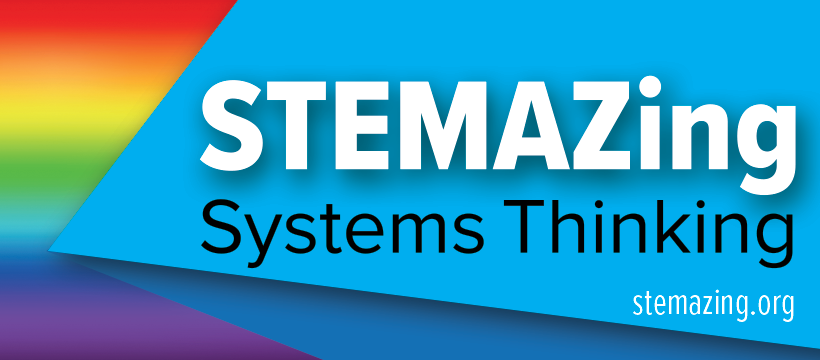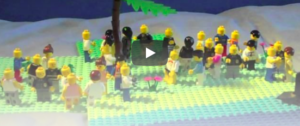8th Grade AzSS-Aligned Resources
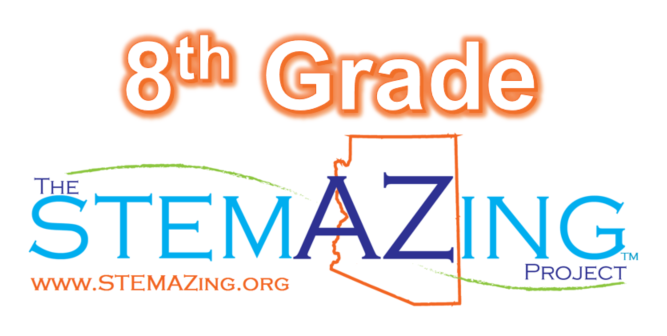
Lessons, videos, storylines, phenomena, and more all curated by The STEMAZing Project to link directly to 2018 Arizona Science Standards.
- 8.P1U1.1 (NGSS-S: MS-PS1-5) Develop and use a model to demonstrate that atoms and molecules can be combined or rearranged in chemical reactions to form new compounds with the total number of each type of atom conserved.
- 8.P1U1.2 (NGSS-NC) Obtain and evaluate information regarding how scientists identify substances based on unique physical and chemical properties.
- 8.P4U1.3 (NGSS-NC) Construct an explanation on how energy can be transferred from one energy store to another.
- 8.P4U1.4 (NGSS-S: MS-PS4-1 & MS-PS4-2) Develop and use mathematical models to explain wave characteristics and interactions.
- 8.P4U2.5 (NGSS-P: MS-PS3-3) Develop a solution to increase efficiency when transferring energy from one source to another.
- 8.E1U1.6 (NGSS-P: MS-ESS1-4 & MS-LS4-1) Analyze and interpret data about the Earth’s geological column to communicate relative ages of rock layers and fossils.
- 8.E1U3.7 (NGSS-P: MS-ESS3-2) Obtain, evaluate, and communicate information about data and historical patterns to predict natural hazards and other geological events.
- 8.E1U3.8 (NGSS-S: MS-ESS3-4) Construct and support an argument about how human consumption of limited resources impacts the biosphere.
- 8.L3U1.9 (NGSS-P: MS-LS3-2) Construct an explanation of how genetic variations occur in offspring through the inheritance of traits or through mutations.
- 8.L3U3.10 (NGSS-P: MS-LS4-5) Communicate how advancements in technology have furthered the field of genetic research and use evidence to support an argument about the positive and negative effects of genetic research on human lives.
- 8.L4U1.11 (NGSS-P: MS-LS4-6) Develop and use a model to explain how natural selection may lead to increases and decreases of specific traits in populations over time.
- 8.L4U1.12 (NGSS-P: MS-LS4-4) Gather and communicate evidence on how the process of natural selection provides an explanation of how new species can evolve.
- Other 8th Grade Resources
8.P1U1.1 (NGSS-S: MS-PS1-5) Develop and use a model to demonstrate that atoms and molecules can be combined or rearranged in chemical reactions to form new compounds with the total number of each type of atom conserved.
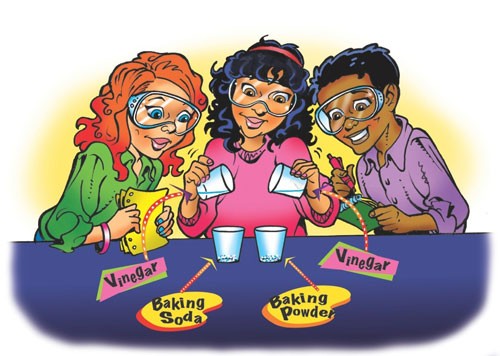
ACS Inquiry in Action: Chapter 3 – Substances Can Mix and React to Form New Substances
NOTE: Those these are indicated for 5th grade, they best align with both 5th and 8th grade AzSS standards. Students use baking soda, calcium chloride and other common substances to discover that when certain substances ...
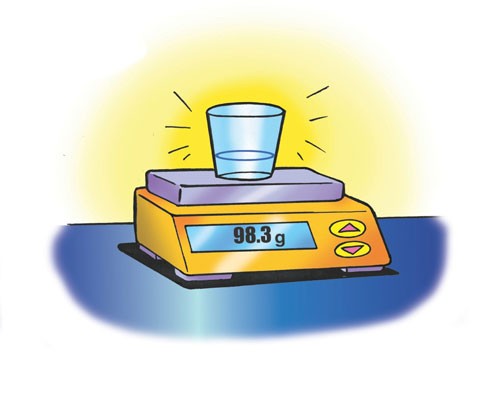
ACS Inquiry in Action: Chapter 4 – Conservation of Mass
NOTE: Those these are indicated for 5th grade, they align with both 5th grade and 8th grade AzSS standards. Through exploring melting, dissolving, and chemical change, students discover that mass is conserved during all these ...

ACS Inquiry in Action: Chapter 3 – Substances Can Mix and React to Form New Substances
NOTE: Those these are indicated for 5th grade, they best align with both 5th and 8th grade AzSS standards. Students use baking soda, calcium chloride and other common substances to discover that when certain substances ...

ACS Inquiry in Action: Chapter 4 – Conservation of Mass
NOTE: Those these are indicated for 5th grade, they align with both 5th grade and 8th grade AzSS standards. Through exploring melting, dissolving, and chemical change, students discover that mass is conserved during all these ...
8.P1U1.2 (NGSS-NC) Obtain and evaluate information regarding how scientists identify substances based on unique physical and chemical properties.
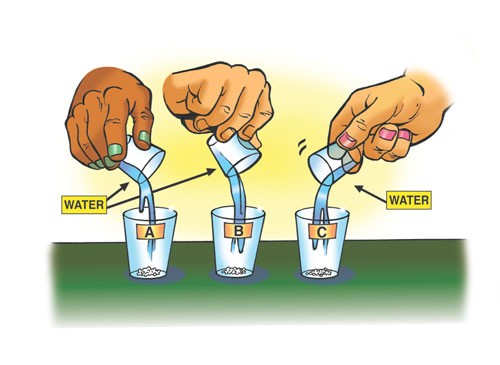
ACS Inquiry in Action: Chapter 2 – Substances Have Characteristic Properties
NOTE: Those these are indicated for 5th grade, they best align with 8th grade AzSS standards. Students investigate the solubility, density, and other properties of solids and liquids to identify substances based on their unique ...

ACS Inquiry in Action: Chapter 3 – Substances Can Mix and React to Form New Substances
NOTE: Those these are indicated for 5th grade, they best align with both 5th and 8th grade AzSS standards. Students use baking soda, calcium chloride and other common substances to discover that when certain substances ...

ACS Inquiry in Action: Chapter 2 – Substances Have Characteristic Properties
NOTE: Those these are indicated for 5th grade, they best align with 8th grade AzSS standards. Students investigate the solubility, density, and other properties of solids and liquids to identify substances based on their unique ...

ACS Inquiry in Action: Chapter 3 – Substances Can Mix and React to Form New Substances
NOTE: Those these are indicated for 5th grade, they best align with both 5th and 8th grade AzSS standards. Students use baking soda, calcium chloride and other common substances to discover that when certain substances ...
8.P4U1.3 (NGSS-NC) Construct an explanation on how energy can be transferred from one energy store to another.
No posts found.
No posts found.
8.P4U1.4 (NGSS-S: MS-PS4-1 & MS-PS4-2) Develop and use mathematical models to explain wave characteristics and interactions.
No posts found.
No posts found.
8.P4U2.5 (NGSS-P: MS-PS3-3) Develop a solution to increase efficiency when transferring energy from one source to another.
No posts found.
No posts found.
8.E1U1.6 (NGSS-P: MS-ESS1-4 & MS-LS4-1) Analyze and interpret data about the Earth’s geological column to communicate relative ages of rock layers and fossils.
No posts found.
No posts found.
8.E1U3.7 (NGSS-P: MS-ESS3-2) Obtain, evaluate, and communicate information about data and historical patterns to predict natural hazards and other geological events.
No posts found.
No posts found.
8.E1U3.8 (NGSS-S: MS-ESS3-4) Construct and support an argument about how human consumption of limited resources impacts the biosphere.
No posts found.
No posts found.
8.L3U1.9 (NGSS-P: MS-LS3-2) Construct an explanation of how genetic variations occur in offspring through the inheritance of traits or through mutations.
8.L3U3.10 (NGSS-P: MS-LS4-5) Communicate how advancements in technology have furthered the field of genetic research and use evidence to support an argument about the positive and negative effects of genetic research on human lives.
No posts found.
No posts found.
8.L4U1.11 (NGSS-P: MS-LS4-6) Develop and use a model to explain how natural selection may lead to increases and decreases of specific traits in populations over time.
No posts found.
No posts found.
8.L4U1.12 (NGSS-P: MS-LS4-4) Gather and communicate evidence on how the process of natural selection provides an explanation of how new species can evolve.
No posts found.
No posts found.
Other 8th Grade Resources (Including group work and nature of science lessons)

8th Grade AzSS vs NGSS Planning Guide
Great for cross-referencing the Arizona Science Standards to the Next Generation Science Standards (NGSS) when looking for resources from collections aligned to NGSS. S = strong alignment (same science and engineering practice, same content). P ...
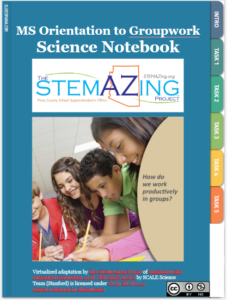
Middle School Virtual Orientation to Groupwork Unit
This virtualized version of the Stanford SCALE Science Unit 0 - Orientation to Groupwork for 6th grade. was co-designed by Melissa Wilburn (6th grade STEMAZing Teacher Leader with the Marana Unified School District), Sherrie Dennis ...

8th Grade AzSS vs NGSS Planning Guide
Great for cross-referencing the Arizona Science Standards to the Next Generation Science Standards (NGSS) when looking for resources from collections aligned to NGSS. S = strong alignment (same science and engineering practice, same content). P ...

Middle School Virtual Orientation to Groupwork Unit
This virtualized version of the Stanford SCALE Science Unit 0 - Orientation to Groupwork for 6th grade. was co-designed by Melissa Wilburn (6th grade STEMAZing Teacher Leader with the Marana Unified School District), Sherrie Dennis ...
